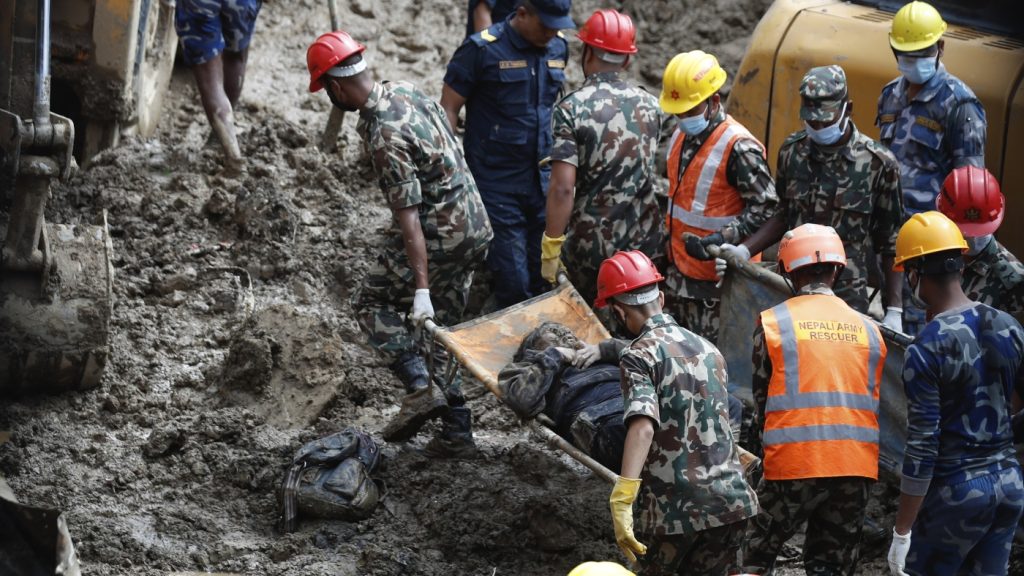As of Monday, the death toll from severe flooding and landslides in Nepal has risen to 193, following heavy rainfall over the weekend.
Recovery and rescue operations have been ramped up across the country, with authorities working to locate those still missing and provide aid to affected communities.
The capital city, Kathmandu, was among the hardest hit, with extensive flooding in its southern regions.
According to police reports, 31 individuals remain missing, while 96 people have been injured across the nation.
In one tragic incident, a landslide on a highway near Kathmandu buried at least three buses and other vehicles, killing around three dozen people who had been stranded and sleeping in their vehicles.
Kathmandu was effectively cut off from surrounding areas over the weekend, as landslides blocked all three highways leading out of the city.
Workers have since managed to partially reopen the Prithvi Highway by clearing debris, including rocks, mud, and fallen trees, that had been washed down from the mountains.

In response to the disaster, Nepal’s Home Minister has announced that temporary shelters will be provided to those who have lost their homes.
Additionally, financial assistance will be made available to the families of those who lost their lives and to those injured by the floods and landslides.
Prime Minister Khadga Prasad Oli, who was returning from the United States General Assembly, called for an emergency meeting to address the crisis. Improved weather conditions have allowed authorities to accelerate rescue and recovery efforts.
In Kathmandu, where at least 34 people have died, residents in flooded areas have begun cleaning up their homes as water levels slowly recede.
Police and military personnel are actively assisting with rescue efforts, and heavy machinery is being used to clear blocked roads.

The government has also announced the closure of all schools and colleges across Nepal for the next three days as a precautionary measure.
Meanwhile, in northern Bangladesh, approximately 60,000 people have been affected by flooding caused by rising water levels from neighbouring India. Many have sought refuge on roads and embankments in the districts of Lalmonirhat and Kurigram.
Several rivers, including the Teesta, Dharala, and Dudhkumar, are experiencing rising water levels, though they remain below danger thresholds for the time being.
According to the Dhaka-based Flood Forecasting and Warning Centre, water levels in the region are expected to recede within a few days.
Both Nepal and Bangladesh are grappling with the severe impacts of the monsoon season, which began in June and is expected to conclude by mid-September.


